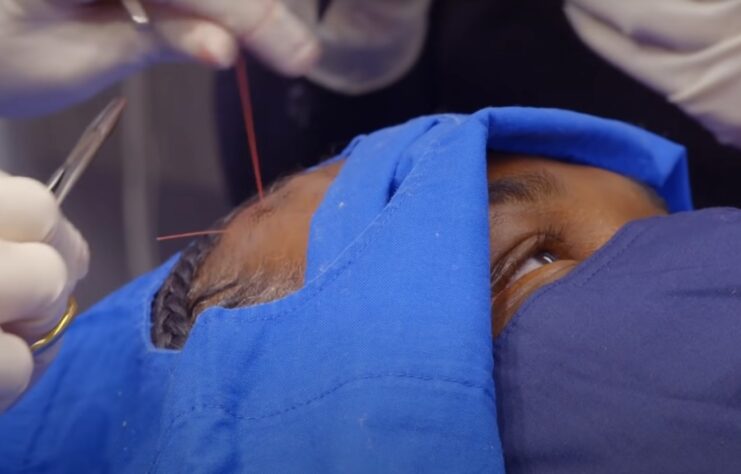Lipomas, those gentle, harmless lumps that can pop up almost anywhere on your body, are like little mysteries tucked beneath your skin. They’re soft to the touch, painless, and carry the same color as your skin, making them somewhat of an undercover agent in the world of bodily growths.
These intriguing formations are the result of fatty cells gathering together in the subcutaneous layer of your skin, like a secret meeting of cells deciding to form a tiny, benign society.
You might find a lone lipoma setting up camp on your body, or you might discover a cluster of them, like a constellation of stars beneath your skin. Most of them are quite small, usually less than 5 cm, but occasionally, you might stumble upon a lipoma that’s grown unusually large.
These giants of the lipoma world might make you think of more sinister conditions like liposarcoma, but rest assured, they’re usually just overgrown versions of their smaller counterparts.

Lipomas are like uninvited guests that can show up at any time, but they’re most likely to make their appearance during the middle years of life. They’re the slow and steady type, growing at a leisurely pace with little change in size over the years.
When you touch a lipoma, it might remind you of a soft, rubbery playdough, and you’ll notice it moves around freely under your skin, like a tiny creature exploring its subcutaneous home.
While lipomas are generally quite content to coexist without causing any trouble, there are times when they might become a bit of a nuisance. For instance, if a lipoma decides to settle down in a flexural region, like the folds of your arm or neck, it might get rubbed frequently, leading to irritation and discomfort. It’s like having a small pebble in your shoe – not harmful, but definitely annoying.
So, there you have it – lipomas, the benign, soft, and mobile lumps that add a touch of mystery to our bodies. They’re a fascinating reminder of the body’s ability to surprise us, even in the most unexpected ways.
Why do I get them?
No one quite knows why you get lipomas. There seems to be a genetic component to developing lipomas, meaning that you are more likely to have them if you have blood relations who do. Some lipomas may be aggravated by minor injuries too.
Less commonly, there are inherited conditions like familial lipoma syndrome, Gardner’s symdrome or Dercum’s disease that can cause large numbers of lipomas to develop in affected individuals.
Are they dangerous?
Lipomas are benign lesions. They are not cancerous or harmful to the individual. They may, however, cause localized irritation and discomfort, particularly when found in flexural regions or areas of the skin prone to frequent motion/rubbing.
Rarely, a cancerous lesion known as liposarcomas may resemble a lipoma. Unlike lipomas however, liposarcomas tend to grow rapidly, are fixed (don’t move easily under the skin), and are usually painful.
What should I do?
For the large part, lipomas can be left safely alone. However you should consult a doctor if you note any unusual activity in your lesion ( e.g. rapid growth, persistent pain, fixation of previously mobile lesion etc). If necessary, your doctor may recommend a biopsy of the lesion or imaging such as Magnetic Resonance Imaging (MRI) to rule out liposarcomas or other malignant lesions.
You may also wish to consult a doctor if you are keen for removal of the lipoma, either for cosmetic reasons or for relief of localised irritation.
How do I get rid of it?

Lipomas may be treated conservatively with steroid injections; however results are usually unsatisfactory. The best treatment approach is removal of the lump. While liposuction is possible, the far preferred technique is surgical excision. This can usually be done safely and quickly in the GP setting. Under local anesthesia, the lesion can either be excised completely or removed in a segmental fashion. The incision wound is closed by suturing, with removal of the sutures done at a separate setting.
Even with complete excision of the lesion there may be a small chance of recurrence. However such recurrences generally tend to start small and progress very slowly so you may still benefit from removal.
Occasionally, very large lipomas or lipomas in certain regions such as the neck may need to be removed in an operative setting , often with general anaesthesia. In these circumstances, you may be referred to a surgeon to review and prepare for the surgical removal. Most lesions can still be done as a day surgery and you should be able to return to work soon after.
Final Words
In conclusion, lipomas are benign, harmless lumps that can appear anywhere on your body. They’re a fascinating phenomenon, a testament to the body’s ability to surprise us in the most unexpected ways.
While they’re usually nothing to worry about, it’s always a good idea to keep an eye on them. If you notice any changes in size, shape, or discomfort, it’s best to consult with a doctor.
Remember, your body is a complex, intricate system, and it’s always communicating with you. Lipomas are just one of the many ways it does so. So, listen to your body, take care of it, and it will take care of you. Whether you choose to live with your lipomas or opt for removal, the choice is yours. After all, you’re the one who knows your body best.
So, here’s to embracing our bodies, lipomas and all, and to the fascinating journey of discovery that is human health.
Related Posts:
- Hemorrhoids: Common Lumps & Bumps - Causes,…
- Keloids & Hypertrophic Scars - Common Lumps & Bumps
- Common Lumps & Bumps – Molluscum Contagiosum
- Vaginal Lumps and Bumps: What Every Woman Should Know
- 11 Plants That Look Like Aloe Vera + 7 Poisonous…
- How Long Can HIV Live Outside the Body? The Clock Is Ticking












